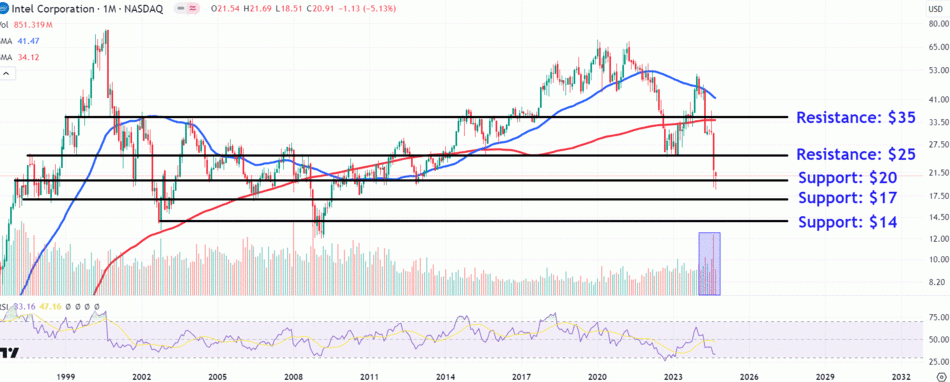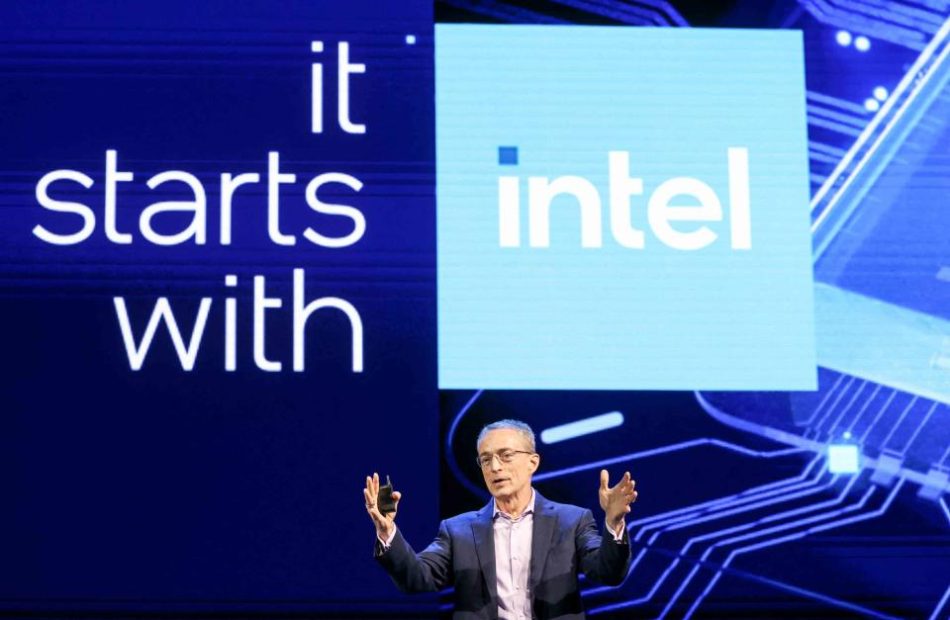Cannabis Retailer High Tide Reports Q3 Results
High Tide Inc. HITI reported its third-quarter financial results after Monday’s closing bell. Here’s a look at the details from the report.
The Details: High Tide reported quarterly GAAP earnings of 74 cents per share and revenue of $97 million, which beat the consensus estimate of $92 million.
Read Next: NVIDIA, Micron, SMCI Stocks Are Down Monday: What’s Going On?
The company said gross profit margin for the quarter was 27%, compared to 28% in the same period last year and sequentially, and the quarter represented High Tide’s 18th consecutive quarter of positive Adjusted EBITDA.
“Over the last year, the High Tide team has presented investors with compelling proof points as to how we’re different than other retailers, and our third quarter results offer even further evidence of this. Our numbers continue to drive home the fact that we are a well-managed, innovative company that has grown responsibly while continuing to build value for shareholders,” said Raj Grover, CEO of High Tide.
HITI Price Action: According to Benzinga Pro, High Tide shares are up 8.68% after-hours at $2.38 at the time of publication Monday.
Read Also:
Photo: Courtesy of High Tide, Inc.
Market News and Data brought to you by Benzinga APIs
© 2024 Benzinga.com. Benzinga does not provide investment advice. All rights reserved.
Click on the image for more info.
Cannabis rescheduling seems to be right around the corner
Want to understand what this means for the future of the industry?
Hear directly for top executives, investors and policymakers at the Benzinga Cannabis Capital Conference, coming to Chicago this Oct. 8-9.
Get your tickets now before prices surge by following this link.
Mark Zuckerberg's Meta Banishes Russian State Media Globally To Counter Foreign Influence: RT And Related Entities 'Are Now Banned From Our Apps Globally'
Meta Platforms Inc META has banned RT, Rossiya Segodnya, and other Russian state media from its platforms. The ban, announced on Monday, marks an escalation in Meta’s efforts to combat foreign interference.
What Happened: The decision follows accusations that these outlets employed deceptive tactics for covert influence operations online, reported Reuters.
This action represents a significant escalation in Meta’s efforts against Russian state media, which previously included blocking ads and limiting post reach.
Meta stated, “After careful consideration, we expanded our ongoing enforcement against Russian state media outlets. Rossiya Segodnya, RT and other related entities are now banned from our apps globally for foreign interference activity.”
The enforcement will roll out over the coming days across Facebook, Instagram, WhatsApp, and Threads, according to the report.
The ban follows recent U.S. money laundering charges against two RT employees for allegedly attempting to influence the 2024 election.
U.S. Secretary of State Antony Blinken recently urged countries to treat RT’s activities like covert intelligence operations. RT has criticized the U.S. actions, accusing the United States of trying to hinder its journalistic operations.
Why It Matters: The ban on Russian state media by Meta comes amid ongoing tensions between the U.S. and Russia, particularly in the digital space.
In 2023, Russia’s restrictions on Western social media platforms like Facebook, Instagram, and X led to a reported loss of over $4 billion from its economy.
According to a study by Top10VPN, Russia experienced 1,353 hours of internet shutdowns during the first year of the Ukraine invasion, affecting 113 million internet users.
Meta’s actions are part of a broader effort to combat disinformation and covert influence operations. Earlier this year, Meta took down numerous Facebook accounts linked to covert influence campaigns from countries including China, Iran, Russia, and Israel.
These campaigns reportedly used artificial intelligence tools to spread disinformation, as highlighted in Meta’s quarterly threat report.
Additionally, Meta has faced pressure from various governments to regulate content on its platforms. In August, Meta CEO Mark Zuckerberg revealed that the company faced pressure from President Joe Biden administration’s officials to censor certain COVID-19 content.
Zuckerberg expressed regret for not opposing the pressure sooner, as noted in a letter addressed to the House Judiciary Committee.
Read Next:
Image Via Shutterstock
This story was generated using Benzinga Neuro and edited by Kaustubh Bagalkote
Market News and Data brought to you by Benzinga APIs
© 2024 Benzinga.com. Benzinga does not provide investment advice. All rights reserved.
Micron Stock Sinks as Morgan Stanley Warns About Memory Chip Sector
Kyle Green / Bloomberg via Getty Images
Key Takeaways
-
Morgan Stanley cut its price target for Micron Technology and warned about the future of the memory chip sector.
-
The bank said it sees “chillier conditions from here” for the stock group.
-
The analysts expect the sector’s growth to peak and reverse in the coming quarters.
Micron Technology (MU) stock was one of the biggest decliners in the S&P 500 Monday after Morgan Stanley slashed its price target to $100 from $140 and gave a downbeat assessment of the memory chip sector.
The bank warned that although it’s difficult to predict cyclical peaks, “both NAND and DRAM are losing steam, and our inflection signposts suggest chillier conditions from here.”
The analysts wrote in a report to clients that while memory chip demand is still moving up, “the rate of change is approaching a peak as supply catches up to demand.”
Morgan Stanley Sees Sector’s Earnings Growth Reversing
They added that they see the sector’s earnings growth reaching the top and then reversing in the coming quarters, with a nearly 30% price-to-book (P/B) ratio contraction, “and a higher chance of investors resetting positions.”
The analysts argued that even if valuations look good as stock prices fall, it doesn’t make sense to buy the dips because they anticipate “better entry points in the future.”
Shares of Micron Technology fell 4.5% Monday afternoon to $87.10. They are up about 2% in 2024.
Read the original article on Investopedia.
ROSEN, GLOBAL INVESTOR COUNSEL, Encourages lululemon athletica inc. Investors to Secure Counsel Before Important Deadline in Securities Class Action – LULU
NEW YORK, Sept. 16, 2024 (GLOBE NEWSWIRE) —
WHY: Rosen Law Firm, a global investor rights law firm, reminds purchasers of securities of lululemon athletica inc. LULU between December 7, 2023 and July 24, 2024, both dates inclusive (the “Class Period”), of the important October 7, 2024 lead plaintiff deadline.
SO WHAT: If you purchased lululemon securities during the Class Period you may be entitled to compensation without payment of any out of pocket fees or costs through a contingency fee arrangement.
WHAT TO DO NEXT: To join the lululemon class action, go to https://rosenlegal.com/submit-form/?case_id=27808 or call Phillip Kim, Esq. toll-free at 866-767-3653 or email case@rosenlegal.com for information on the class action. A class action lawsuit has already been filed. If you wish to serve as lead plaintiff, you must move the Court no later than October 7, 2024. A lead plaintiff is a representative party acting on behalf of other class members in directing the litigation.
WHY ROSEN LAW: We encourage investors to select qualified counsel with a track record of success in leadership roles. Often, firms issuing notices do not have comparable experience, resources or any meaningful peer recognition. Many of these firms do not actually litigate securities class actions, but are merely middlemen that refer clients or partner with law firms that actually litigate the cases. Be wise in selecting counsel. The Rosen Law Firm represents investors throughout the globe, concentrating its practice in securities class actions and shareholder derivative litigation. Rosen Law Firm has achieved the largest ever securities class action settlement against a Chinese Company. Rosen Law Firm was Ranked No. 1 by ISS Securities Class Action Services for number of securities class action settlements in 2017. The firm has been ranked in the top 4 each year since 2013 and has recovered hundreds of millions of dollars for investors. In 2019 alone the firm secured over $438 million for investors. In 2020, founding partner Laurence Rosen was named by law360 as a Titan of Plaintiffs’ Bar. Many of the firm’s attorneys have been recognized by Lawdragon and Super Lawyers.
DETAILS OF THE CASE: According to the lawsuit, throughout the Class Period, defendants made false and misleading statements and/or failed to disclose that: (1) lululemon was struggling with inventory allocation issues and color palette execution issues; (2) as a result, lululemon’s Breezethrough product launch underperformed; (3) as a result of the foregoing, lululemon was experiencing stagnating sales in the Americas region; and (4) as a result of the foregoing, defendants’ positive statements about lululemon’s business, operations, and prospects were materially misleading and/or lacked a reasonable basis. When the true details entered the market, the lawsuit claims that investors suffered damages.
To join the lululemon class action, go to https://rosenlegal.com/submit-form/?case_id=27808 or call Phillip Kim, Esq. toll-free at 866-767-3653 or email case@rosenlegal.com for information on the class action.
No Class Has Been Certified. Until a class is certified, you are not represented by counsel unless you retain one. You may select counsel of your choice. You may also remain an absent class member and do nothing at this point. An investor’s ability to share in any potential future recovery is not dependent upon serving as lead plaintiff.
Follow us for updates on LinkedIn: https://www.linkedin.com/company/the-rosen-law-firm, on Twitter: https://twitter.com/rosen_firm or on Facebook: https://www.facebook.com/rosenlawfirm/.
Attorney Advertising. Prior results do not guarantee a similar outcome.
——————————-
Contact Information:
Laurence Rosen, Esq.
Phillip Kim, Esq.
The Rosen Law Firm, P.A.
275 Madison Avenue, 40th Floor
New York, NY 10016
Tel: (212) 686-1060
Toll Free: (866) 767-3653
Fax: (212) 202-3827
case@rosenlegal.com
www.rosenlegal.com

Market News and Data brought to you by Benzinga APIs
© 2024 Benzinga.com. Benzinga does not provide investment advice. All rights reserved.
ARTIS REAL ESTATE INVESTMENT TRUST ANNOUNCES MONTHLY CASH DISTRIBUTION
WINNIPEG, MB, Sept. 16, 2024 /CNW/ – Artis Real Estate Investment Trust (“Artis” or the “REIT”) AX announced that its trustees have declared a monthly cash distribution of $0.05 per trust unit (“Unit”) of Artis for the month of September, 2024. The cash distributions will be made on October 15, 2024, to Unitholders on record as of September 30, 2024.
As at the date hereof, there are an aggregate of 103,896,351 Units issued and outstanding.
Artis is a diversified Canadian real estate investment trust with a portfolio of industrial, office and retail properties in Canada and the United States. Artis’s vision is to become a best-in-class real estate asset management and investment platform focused on value investing.
Suite 600 – 220 Portage Avenue
Winnipeg, MB R3C 0A5
T 204.947.1250 F 204.947.0453
www.artisreit.com
AX.UN on the TSX
SOURCE Artis Real Estate Investment Trust

![]() View original content to download multimedia: http://www.newswire.ca/en/releases/archive/September2024/16/c6858.html
View original content to download multimedia: http://www.newswire.ca/en/releases/archive/September2024/16/c6858.html
Market News and Data brought to you by Benzinga APIs
© 2024 Benzinga.com. Benzinga does not provide investment advice. All rights reserved.
Uh-Oh! Alphabet Is Selling Its Stake in 2 Historically High-Flying Artificial Intelligence (AI) Stocks
Five weeks ago, what can arguably be described as the most important data release of the third-quarter occurred — and I’m not talking about the July inflation report.
No later than 45 calendar days following the end to a quarter (Aug. 14 in the latest instance), institutional investors with at least $100 million in assets under management are required to file Form 13F with the Securities and Exchange Commission. A 13F provides a clear-cut rundown of which stocks Wall Street’s brightest, and often richest, investors bought and sold in the latest quarter. Even though these snapshots are up to 45 days old when filed, it offers invaluable insight into the stocks, industries, sectors, and trends have the attention of money managers.
However, 13F filings are a necessity for more than just investment institutions. Some of Wall Street’s largest and most-successful companies hold sizable stakes in other businesses, including Nvidia, and are required to file a 13F on a quarterly basis.
One such company, which has nearly $2 billion invested across 42 stocks, is Alphabet (NASDAQ: GOOGL)(NASDAQ: GOOG), the parent of search engine Google, streaming platform YouTube, and autonomous ride-hailing service Waymo, among other ventures.
Alphabet is a search engine juggernaut… and much more!
Most investors are familiar with Alphabet because of its world-leading Google search engine.
In August, Google accounted for a mammoth 90.48% share of worldwide search, per GlobalStats. In fact, Google has held at least a 90% monthly share of global internet search dating back more than nine years. This makes it the undisputed go-to for businesses wanting to target users with their message(s) and affords parent Alphabet unbelievable ad-pricing power.
You’re probably also familiar with YouTube, the second most-visited social media site on the planet, with approximately 2.5 billion monthly active users. The launch of Shorts — short-form videos lasting 60 seconds or less — in the latter half of 2020 provided an additional opportunity for the company to capitalize on ad revenue.
I’d be remiss if I didn’t also mention that Alphabet’s Google Cloud is the world’s No. 3 cloud infrastructure service platform by spending, with 10% of the market, per Canalys, as of the June-ended quarter. Following years of losses, Google Cloud shifted to recurring profits in 2023 and hasn’t looked back. Since cloud-service margins often outpace advertising margins, this segment should be a key cash-flow driver for Alphabet throughout the remainder of the decade.
But Alphabet is also an investor. It has nearly a quarter of its portfolio invested in development, security, and operations software developer GitLab, and more than 16% of invested assets tied up in Arm Holdings. Arm generates its revenue via licenses and royalties from chipmakers that use its designs to produce central processing units, graphics processing units, and other hardware.
However, it’s not what Alphabet holds that’s raising eyebrows. Rather, it’s the two core artificial intelligence (AI) stocks it’s been selling in consecutive quarters.
CrowdStrike Holdings
The first AI stock Alphabet’s investment managers have shown the door in back-to-back quarters is cybersecurity solutions provider CrowdStrike Holdings (NASDAQ: CRWD). After reducing its stake in CrowdStrike by a third during the March-ended quarter, Alphabet slashed its remaining position by another 50% (427,894 shares) in the June-ended quarter. CrowdStrike is now Alphabet’s fourth-largest position, down from No. 2, where it began 2024.
Valuation is the likely culprit behind this selling activity. Even though CrowdStrike has blown the door off of Wall Street’s consensus growth forecasts for years, it was trading at nosebleed price-to-sales (P/S) and forward price-to-earnings (P/E) ratios. Locking in gains was likely deemed a prudent move.
The more recent concern with CrowdStrike — albeit one that occurred in July, which wouldn’t be detailed by the latest round of Form 13Fs — is a botched update to its Falcon security platform that caused significant downtime for select industries and customers. It’s not uncommon for these snafus to cost cybersecurity companies revenue in the short run.
On the bright side, CrowdStrike’s error was self-inflicted and had nothing to do with a cyberattack. Prior to this July outage, businesses had demonstrated a willingness to pay a premium for CrowdStrike’s services given its history of protecting against breaches.
What’s more, CrowdStrike has mastered the art of the add-on sale within the cybersecurity arena. In less than seven years, it went from a single-digit percentage of its customers purchasing four or more cloud-module subscriptions to 65% of its clients using five or more cloud modules, as of the July ended quarter.
The cherry on top for CrowdStrike is that cybersecurity solutions have evolved into a basic need service. No matter how well or poorly the U.S. economy is performing, businesses with an online or cloud-based presence need to protect their data.
With the cloud-native Falcon platform only growing more effective over time, thanks to AI, Alphabet’s brightest investment minds may regret their decision to sell a collective two-thirds of their stake in CrowdStrike.
DexCom
The other AI stock that Alphabet’s investment team has been dumping for two straight quarters is medical-device giant DexCom (NASDAQ: DXCM). After shedding slightly north of 51% of its stake in the maker of continuous glucose monitoring systems (CGMs) in the first quarter, Alphabet sold another 42.1% of its position (753,836 shares) in the second quarter. This former No. 1 holding of Alphabet has slipped to No. 6 and now accounts for about 6% of invested assets.
Similar to CrowdStrike, valuation has long been the glaring red flag with DexCom. Although it’s been growing sales at a relatively steady rate of around 20% for years, DexCom’s P/S and forward P/E ratios have always been eyebrow-raising.
The more-pressing concern of late for DexCom is what might happen to its business as a result of glucagon-like peptide-1 (GLP-1) agonist drugs hitting the market. GLP-1 therapies have been shown to reduce weight in patients taking them, and obesity is a common co-morbidity for people with diabetes. Although studies have shown that patients on GLP-1 drugs are more likely to use CGMs, DexCom’s second-quarter operating results, which were reported in July (i.e., after 13Fs were filed), did little to quell these concerns.
DexCom lost 40% of its value in the blink of an eye after lowering the midpoint of its full-year sales guidance by about $250 million and highlighting a laundry list of challenges during the quarter. CEO Kevin Sayer pointed to lower revenue per user and the company restructuring its sales team as key reasons for this shortfall. In particular, Sayer believes a lack of sales team coverage in select geographic areas led to the company’s new patient count coming up short.
If there’s a silver lining here, it’s that DexCom is one of the two leading providers of CGM devices, and should, in theory, benefit from the sheer number of people diagnosed with diabetes in the U.S. and worldwide climbing.
DexCom can also lean on its various AI solutions to differentiate itself and provide value to its users. This includes everything from glucose control for its infusion pumps to helping users with dietary assessments to optimize their blood glucose levels.
But the nature of DexCom’s earnings miss is concerning, to say the least. Color me not surprised if Alphabet continues to purge DexCom from its investment portfolio in the September-ended quarter.
Where to invest $1,000 right now
When our analyst team has a stock tip, it can pay to listen. After all, Stock Advisor’s total average return is 755% — a market-crushing outperformance compared to 165% for the S&P 500.*
They just revealed what they believe are the 10 best stocks for investors to buy right now… and CrowdStrike made the list — but there are 9 other stocks you may be overlooking.
*Stock Advisor returns as of September 16, 2024
Suzanne Frey, an executive at Alphabet, is a member of The Motley Fool’s board of directors. Sean Williams has positions in Alphabet. The Motley Fool has positions in and recommends Alphabet, CrowdStrike, GitLab, and Nvidia. The Motley Fool recommends DexCom. The Motley Fool has a disclosure policy.
Uh-Oh! Alphabet Is Selling Its Stake in 2 Historically High-Flying Artificial Intelligence (AI) Stocks was originally published by The Motley Fool
Watch These Intel Price Levels as Stock Surges After CEO Provides Business Update
Shares Surged Nearly 8% in Extended Trading on Monday
Key Takeaways
-
Intel shares surged nearly 8% in extended trading on Monday, adding to big gains during regular trading, after the embattled chipmaker’s CEO Pat Gelsinger provided an update on the company’s plans to slash costs and turn around its business.
-
Although the shares hit a new multi-year low this month, they have made a partial recovery to currently trade near their September high, potentially forming a hammer, a candlestick pattern that suggests a bullish reversal.
-
Investors should monitor important support levels on Intel’s monthly chart at $20, $17, and $14, while watching key resistance areas at $25 and $35.
Intel (INTC) shares surged in extended trading on Monday after the embattled chipmaker’s CEO Pat Gelsinger provided an update on the company’s plans to slash costs and turn around its business.
Gelsinger said in a note to employees released after the closing bell that Intel has made progress in lowering costs through layoffs, trimming its real estate footprint, and selling part of its stake in its Altera programmable chip unit, among other steps. The company also plans to turn its chipmaking arm into a separate subsidiary and said it would produce chips for Amazon (AMZN), as well as the U.S. military.
Intel shares rose 7.9% in after-hours trading to $22.56. The stock had risen more than 6% during regular trading hours following a report from Bloomberg on the contract to produce custom chips for the military. Even with Monday’s gains, the stock has shed more than half its value since the start of the year.
Below, we’ll take a closer look at Intel’s monthly chart and use technical analysis to identify key historical price levels worth watching.
Potential Hammer Candlestick Forming
After encountering significant selling pressure at the closely watched 50-day moving average (MA) in December last year, Intel shares have trended sharply lower, falling as much as 64% since that time. Importantly, trading volumes have increased during the stock’s sell-off, indicating conviction behind the move.
Although the shares hit a new multi-year low this month, they have made a partial recovery to currently trade near their September high, potentially forming a hammer—a candlestick pattern that suggests a bullish reversal.
Looking ahead, investors should monitor several key price levels on Intel’s chart that will likely gain close attention.
Important Support Levels to Watch
Firstly, it’s worth keeping a close eye on the $20 area, a price level the stock reclaimed on Monday. This location on the chart finds a confluence of support from the psychological round number and a horizontal line that connects a range of historical trading levels in the chipmaker’s stock from 1997 to 2012. Confirmation of a September hammer pattern at this key level would register a significant win for the bulls.
However, a continuation of Intel’s downtrend could see the shares fall to around $17, where they would likely find support from a period of consolidation in the stock between 1997 and 1998, an area that also closely aligns with troughs in 2006 and 2010.
Longer-term weakness may bring the $14 region into play, an area on the chart where buy-and-hold investors would likely seek entry points near prominent swing lows that formed during the dotcom bubble correction of 2002 and great recession in 2009.
Key Overhead Levels to Monitor
If an upside reversal takes place in Intel shares, investors should initially keep an eye on the $25 level, a key overhead area where the stock could run into resistance from a horizontal line linking multiple peaks and troughs between 1997 and February last year.
A move above this area could see the shares climb to $35, where they may encounter selling pressure near a trendline joining a series of price action from 1999 to October 2023 with the closely-aligned 200-day moving average.
The comments, opinions, and analyses expressed on Investopedia are for informational purposes only. Read our warranty and liability disclaimer for more info.
As of the date this article was written, the author does not own any of the above securities.
Read the original article on Investopedia.
Intel’s Latest Plans Send Its Stock Soaring—What You Need To Know
I-HWA CHENG / Contributor / Getty Images
Intel CEO Pat Gelsinger.
Key Takeaways
-
Intel shares surged in extended trading Monday after CEO Pat Gelsinger offered an update on the company’s turnaround plans.
-
Gelsinger said Intel has made progress in lowering costs through layoffs, trimming its real estate footprint, and selling part of its stake in Altera, among other moves.
-
The company also plans to turn its chipmaking arm into a separate subsidiary and said it would produce chips for Amazon, as well as the U.S. military.
Intel (INTC) shares surged in extended trading Monday after CEO Pat Gelsinger offered an update on the chipmaker’s plans to cut costs and bolster its business, with investors awaiting signs of a turnaround for its stock.
Shares were up over 8% shortly after the closing bell, after gaining 6% during the regular trading session. Even with those gains, though, Intel’s shares have lost more than half their value since the start of the year.
Intel Plans To Turn Intel Foundry Into Separate Subsidiary
Gelsinger said Intel has made progress in lowering expenses through layoffs, trimming its real estate footprint, and selling part of its stake in its Altera programmable chip unit, among other steps to cut costs.
The company also said it plans to turn Intel Foundry, which makes chips for other companies, into a separate subsidiary, a move that Intel said will give it greater independence, allow it to seek financing independently, and help Intel “optimize the capital structure of each business.” Recent reports had suggested that Intel might sell the operation.
Intel To Make Chips for Amazon, US Military
Intel also announced multibillion-dollar agreements to produce custom chips for Amazon (AMZN), as well as the U.S. military. The Pentagon news was first reported by Bloomberg.
“This news, combined with our [Amazon Web Services] announcement, demonstrates the continued progress we are making to build a world-class foundry business,” Gelsinger said in a release.
Gelsinger added the chipmaker will still be moving forward with projects in Arizona, Oregon, New Mexico and Ohio, adding that Intel remains “well-positioned to scale up production around the world based on market demand.”
Read the original article on Investopedia.
Should Invesco Dividend Achievers ETF Be on Your Investing Radar?
Designed to provide broad exposure to the Large Cap Value segment of the US equity market, the Invesco Dividend Achievers ETF PFM is a passively managed exchange traded fund launched on 09/15/2005.
The fund is sponsored by Invesco. It has amassed assets over $697.06 million, making it one of the average sized ETFs attempting to match the Large Cap Value segment of the US equity market.
Why Large Cap Value
Large cap companies usually have a market capitalization above $10 billion. Overall, they are usually a stable option, with less risk and more sure-fire cash flows than mid and small cap companies.
Value stocks have lower than average price-to-earnings and price-to-book ratios. They also have lower than average sales and earnings growth rates. While value stocks have outperformed growth stocks in nearly all markets when you consider long-term performance, growth stocks are more likely to outpace value stocks in strong bull markets.
Costs
Expense ratios are an important factor in the return of an ETF and in the long term, cheaper funds can significantly outperform their more expensive counterparts, other things remaining the same.
Annual operating expenses for this ETF are 0.53%, making it one of the more expensive products in the space.
It has a 12-month trailing dividend yield of 1.65%.
Sector Exposure and Top Holdings
It is important to delve into an ETF’s holdings before investing despite the many upsides to these kinds of funds like diversified exposure, which minimizes single stock risk. And, most ETFs are very transparent products that disclose their holdings on a daily basis.
This ETF has heaviest allocation to the Information Technology sector–about 21.40% of the portfolio. Financials and Healthcare round out the top three.
Looking at individual holdings, Apple Inc accounts for about 4.31% of total assets, followed by Microsoft Corp and Broadcom Inc.
The top 10 holdings account for about 26.99% of total assets under management.
Performance and Risk
PFM seeks to match the performance of the NASDAQ US Broad Dividend Achievers Index before fees and expenses. The NASDAQ US Broad Dividend Achievers Index is designed to identify a diversified group of dividend-paying companies which have increased their annual dividend for 10 or more consecutive fiscal years.
The ETF has gained about 16.28% so far this year and it’s up approximately 23.33% in the last one year (as of 09/16/2024). In the past 52-week period, it has traded between $35.25 and $46.01.
The ETF has a beta of 0.83 and standard deviation of 13.92% for the trailing three-year period, making it a medium risk choice in the space. With about 426 holdings, it effectively diversifies company-specific risk.
Alternatives
Invesco Dividend Achievers ETF holds a Zacks ETF Rank of 2 (Buy), which is based on expected asset class return, expense ratio, and momentum, among other factors. Because of this, PFM is a great option for investors seeking exposure to the Style Box – Large Cap Value segment of the market. There are other additional ETFs in the space that investors could consider as well.
The Schwab U.S. Dividend Equity ETF SCHD and the Vanguard Value ETF VTV track a similar index. While Schwab U.S. Dividend Equity ETF has $60.01 billion in assets, Vanguard Value ETF has $125.50 billion. SCHD has an expense ratio of 0.06% and VTV charges 0.04%.
Bottom-Line
While an excellent vehicle for long term investors, passively managed ETFs are a popular choice among institutional and retail investors due to their low costs, transparency, flexibility, and tax efficiency.
Market News and Data brought to you by Benzinga APIs
© 2024 Benzinga.com. Benzinga does not provide investment advice. All rights reserved.
Forget Nvidia, Buy This Magnificent Stock Instead
It’s no secret that Nvidia‘s (NASDAQ: NVDA) stock price has surged in recent years thanks largely to its association with artificial intelligence (AI), particularly the massive spending being done to expand data center computing power. Along with the price surge has come a surge in valuation for the stock.
If you are the type of investor who doesn’t like buying hot stocks at hefty valuations but still wants some exposure to the spending jump related to AI and data centers, Johnson Controls (NYSE: JCI) might be the answer. Here’s why this heating, ventilation, and air-conditioning (HVAC) specialist offers a great AI-related alternative to high-priced Nvidia.
Wall Street upgrades Johnson Controls
Johnson Controls stock received some positive ratings from heavyweight Wall Street investment companies recently. Bank of America analysts upgraded the stock to a buy rating and increased the price target to $80 (from $76), while Morgan Stanley analysts initiated coverage on Johnson Controls with an $85 price target and an overweight rating.
Analysts at both firms mentioned positive indicators involving end-market exposure for Johnson Controls. Bank of America’s analyst asserted that Johnson Controls will generate 14% of its revenue from data centers this year. At the same time, Morgan Stanley’s analyst said the company’s solutions help building owners create efficiency gains — a good theme as property owners seek to cut costs.
The AI/data center angle is relevant to the HVAC sector. Robust HVAC solutions are needed to maintain a controlled environment in data centers so equipment can perform optimally.
That’s one reason why HVAC companies’ shares have generally outperformed this year. However, Johnson Controls has underperformed its immediate peers, Trane Technologies (NYSE: TT) and Carrier Global (NYSE: CARR).
It also trades at a valuation discount to its peers.
Opportunities for a new CEO
One reason the stock underperformed the competition was management’s patchy record with guidance. Johnson Controls missed its own estimates on earnings in 2022 and sales in 2023. That pattern continued in its fiscal 2024 (which ended Sept. 30, 2024). During its fiscal Q2 earnings call in May, management maintained its guidance for full-year organic sales growth in the mid-single-digit range, only to cut it to approximately 3% in its Q3 report released on July 31.
It’s unclear if the company’s disappointing execution is why activist hedge funds are taking positions in the stock. Still, we know George Oliver announced he would retire as CEO in conjunction with that same third-quarter report. Hopefully, its next leader will be able to take advantage of the company’s significant growth opportunities.
Why Johnson Controls can outperform
While organic sales growth of 3% isn’t what investors expected this year, the company’s orders and backlog continue to grow. Oliver noted “strong demand for our data center solutions,” and asserted, “We have built a leading position in data centers in North America, due to a unique and compelling customer value proposition.”
Alongside the growth in data center demand to support the computing power needs of AI, Johnson Controls has an excellent growth opportunity coming from the trend of retrofitting buildings as owners strive to cut costs and reduce their carbon footprint. These efficiency gains are also being driven by the increasing use of digital technology in buildings, and the company continues to see strong adoption of its OpenBlue digital platform.
Restructuring to focus on its core business
A third catalyst that could lift its stock price comes from the company restructuring to focus on its core commercial and industrial HVAC business, not least by agreeing to sell its residential and light commercial HVAC business to Bosch in a transaction valued at $8.1 billion. (Johnson Controls will receive $6.7 billion.)
Alongside the sale of its air distribution technologies business, Johnson Controls will divest businesses responsible for about 20% of its overall sales, becoming a much more focused company in the process.
A stock to buy
After those divestitures, an even larger share of the company’s revenue will come from data centers and AI, while the underlying growth from the race to net zero will continue to support order and backlog growth.
Johnson Controls may not be as exciting a stock as Nvidia, but the company looks undervalued given its potential. Investors can expect good returns from the stock if management delivers on the opportunities outlined above.
Should you invest $1,000 in Johnson Controls International right now?
Before you buy stock in Johnson Controls International, consider this:
The Motley Fool Stock Advisor analyst team just identified what they believe are the 10 best stocks for investors to buy now… and Johnson Controls International wasn’t one of them. The 10 stocks that made the cut could produce monster returns in the coming years.
Consider when Nvidia made this list on April 15, 2005… if you invested $1,000 at the time of our recommendation, you’d have $729,857!*
Stock Advisor provides investors with an easy-to-follow blueprint for success, including guidance on building a portfolio, regular updates from analysts, and two new stock picks each month. The Stock Advisor service has more than quadrupled the return of S&P 500 since 2002*.
*Stock Advisor returns as of September 16, 2024
Bank of America is an advertising partner of The Ascent, a Motley Fool company. Lee Samaha has no position in any of the stocks mentioned. The Motley Fool has positions in and recommends Bank of America and Nvidia. The Motley Fool recommends Johnson Controls International. The Motley Fool has a disclosure policy.
Forget Nvidia, Buy This Magnificent Stock Instead was originally published by The Motley Fool











